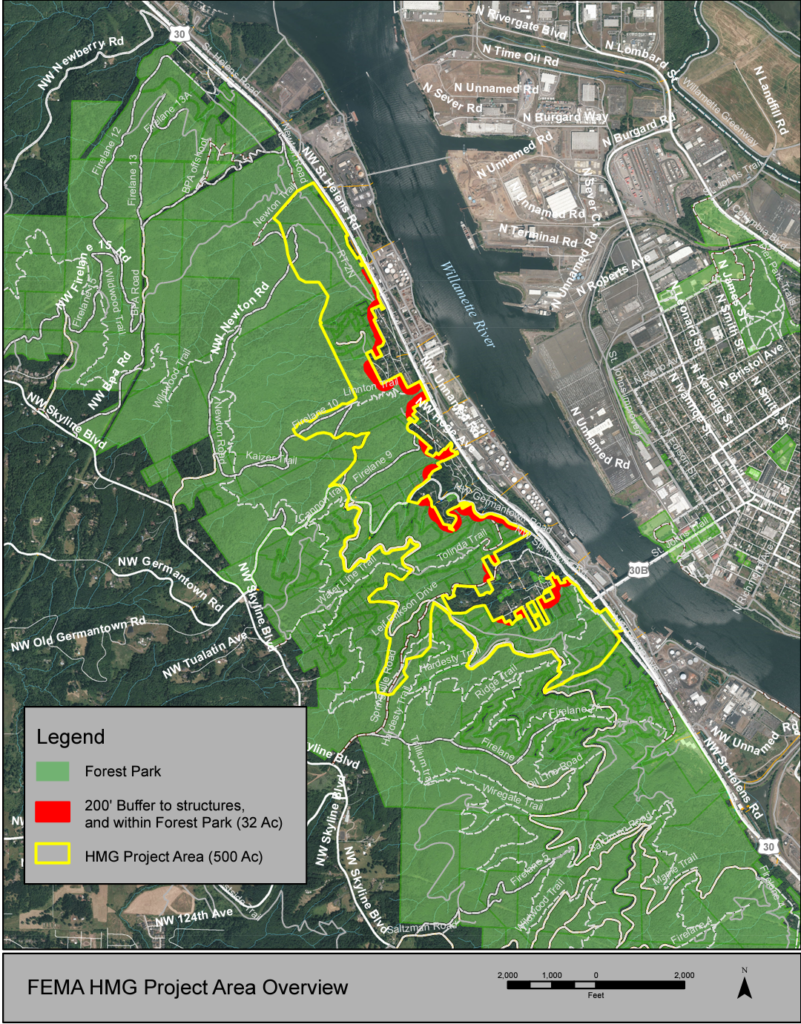While the trilliums still haven’t bloomed in Forest Park, summer is on the horizon, and many of us are beginning to think about fire season. There is no better time than now to get to work to prepare and do everything we can to mitigate risk.
Forest Park Conservancy (FPC), Portland Parks and Recreation (PP&R), and the Portland Fire and Rescue (PF&R) Departments have been working together throughout the winter to reduce the risk of wildfire in preparation for the driest and warmest times of the year under the Forest Park Wildfire Risk Reduction Project.
About the grant
The project focuses on wildfire risk reduction work in high-priority areas in Forest Park near the Linnton and Springville neighborhoods. The funding is from the Federal Emergency Management Agency (FEMA) but distributed from the Oregon Office of Emergency Management.

The work under this grant focuses on removing non-native species like laurels and holly and hazardous fuel like English ivy. It also includes replanting native plants to help restore the forest. Grant dollars are for work within the Forest Park boundary.
Fuels Reduction and Outreach Progress
So far, Portland Parks has contracted Rosario Franco Restoration, Inc. with a crew of 10-20 people a day. R. Franco Restoration provides forest management and natural habitat restoration services and specializes in weed management, and native plant revegetation. Contracted workers have made a lot of progress and have covered about a quarter of the total acreage in the highest priority zones.
In February, Forest Park Conservancy’s staff knocked on doors in the Linnton Neighborhood alongside Portland Fire and Rescue staff.
FPC has committed to outreach to 120 property owners within the 2-year project. In the first outing, 30 homes were reached and received informational materials about the project and what people can do to reduce fire risk on their property.
What’s Next?
The next steps are to continue restoration work in mid-March and focus on tree ivy and other non-native plants including blackberry on the edges of neighborhoods and along the powerline corridor. Forest Park Conservancy’s outreach staff will visit more neighboring communities in early April.
To learn more about this grant and how you can help reduce wildfire risk in and around Forest Park, please visit forestparkconservancy.org/fire for more information.
